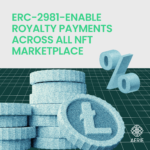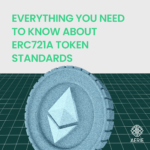Tokenomics: The Economics of Digital Assets
In the last few years, the term “tokenomics” has gained more and more popularity within the world of finance and technology. This new field combines concepts from economics, game theory, computer science, and psychology to understand how digital assets (aka tokens) can be used within a network.
The word itself is a mashup of “token” and “economics,” and it’s all about the study of creating, distributing, and using digital assets (aka tokens) within a network. In other words, it’s the economic system built around the use of tokens.
Let’s pump the brakes for a sec and talk about what a token is.
What is a token?
A token is a digital unit of a cryptocurrency that can represent a specific asset or purpose on the blockchain. Cryptocurrencies are specific types of tokens designed to function as a medium of exchange or store of value. They use cryptography to secure and verify transactions and operate independently of central banks or governments.
Given that you’ll come across the word token a lot while researching Web3, blockchain, NFTs, or cryptocurrencies, it’s helpful to understand that some categories of crypto assets have “token” in their name. Here are a few examples:
DeFi tokens
DeFi tokens are a type of cryptocurrency specifically designed for use within decentralized finance (DeFi) applications. These tokens seek to replicate traditional financial system functions such as trading, lending and saving, and insurance.
Non-Fungible Tokens (NFTs)
NFTs are unique digital assets that cannot be replicated or exchanged for something else of equal value. Each NFT is one-of-a-kind, with its own unique identifying code stored on a blockchain network. What’s cool about this tech is that it allows creators to verify and authenticate the ownership and provenance of digital assets such as art, music, videos, and other forms of creative work.
Governance tokens
Governance tokens are a type of token that gives you some say in how a blockchain protocol or application gets developed. Since these protocols are decentralized and don’t have one person or group in charge, governance tokens give you a voice in deciding how things should be done.
So, if you hold governance tokens for a particular protocol, you can help decide things like which new features to add, how to fix bugs, or how to allocate resources.
Security tokens
Security tokens are a recent category of crypto assets that try to act like regular securities, like stocks or bonds. The idea is to let people buy and sell shares in a company or other ventures like real estate without needing to go through middlemen like brokers.
Just like in the regular stock market, security tokens can be used to sell off pieces of a company or enterprise. This is super useful for startups and big corporations who want to raise money without going through traditional funding channels.
What is tokenomics?
Tokenomics studies how digital tokens like cryptocurrencies work within a blockchain system. Imagine a blockchain like a giant computer network that lots of people use to buy and sell things or share information.
Tokens are like digital money or credit that you can use within this network. Tokenomics is about figuring out how to create these tokens, how many there should be, and how they should be used within the network.
For example, if there are too many tokens, their value might go down, so tokenomics helps figure out how many tokens should be created to make sure they keep their value over time.
Tokenomics is also about figuring out how to reward people who help keep the network running smoothly, like validators or miners.
Overall, tokenomics is important because it helps make sure that digital tokens work well within a network and can be used for different things while also keeping their value.
So, why should I care?
Tokenomics might sound like a topic reserved for crypto enthusiasts and techies, but don’t let the word scare you away. This topic is actually pretty relevant to regular folks too, because it affects their experience and the value of their investments when they use cryptocurrencies or digital tokens within a blockchain system.
A token with good tokenomics is more valuable and has more potential for growth over time. This means that people holding the token could earn money by holding it or using it to buy and sell things within the network.
On the other hand, if a token has poor tokenomics, it is less valuable and has less potential for growth over time. This means that people who hold the token could lose money, or it might not be useful for buying and selling things within the network.
How to know if a system has good tokenomics?
Checking whether a blockchain has good tokenomics can be pretty tricky, but there are some important things you should keep in mind. Here are a few things to watch out for:
Token distribution
A system with good tokenomics should have a fair and transparent way of distributing tokens, with a clear plan for how many tokens will be released over time.
Utility
Tokens should have clear utility within the system, meaning they have a specific use case and are necessary for certain actions or transactions within the network.
Demand
Tokens with good tokenomics should have a strong demand, meaning that people are willing to buy and hold onto them for the long term.
Scarcity
The supply of tokens should be limited or well-managed to ensure that the token retains its value over time.
Incentives
The system should have strong incentive mechanisms in place to encourage network participants to support and maintain the system, which can help drive adoption and support.
Transparency
The system’s tokenomics should be transparent, with clear information available about how the system works, how tokens are distributed, and how the value of the token is determined.
Tokenomics is a crucial concept in the world of blockchain technology and digital assets. By understanding how tokens work within a network, we can better grasp their value and potential for growth. Good tokenomics can make a token more valuable and useful within a network, while poor tokenomics can lead to a decrease in value and usefulness.
As the world of cryptocurrencies and digital assets continues to evolve, tokenomics will remain an important field for investors, developers, and enthusiasts alike.









